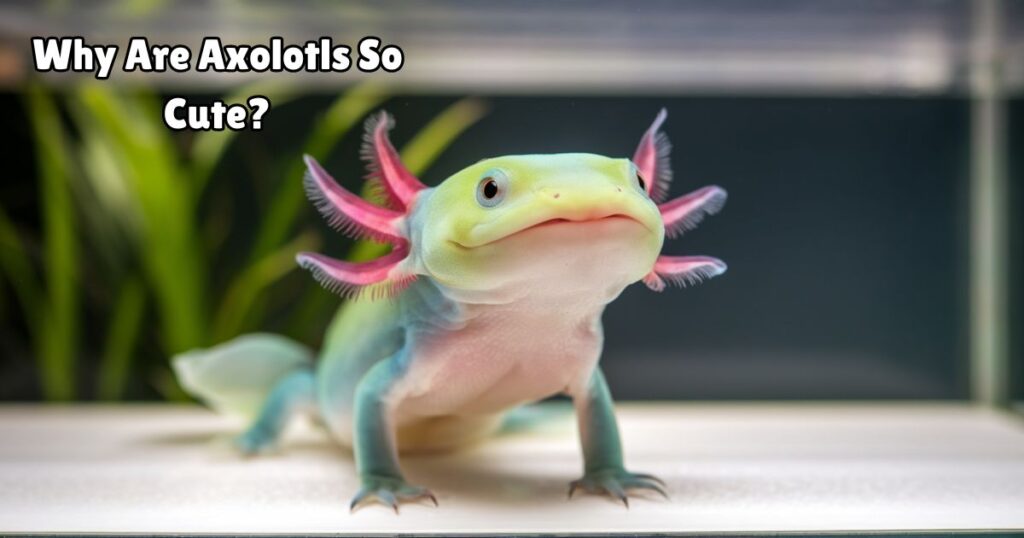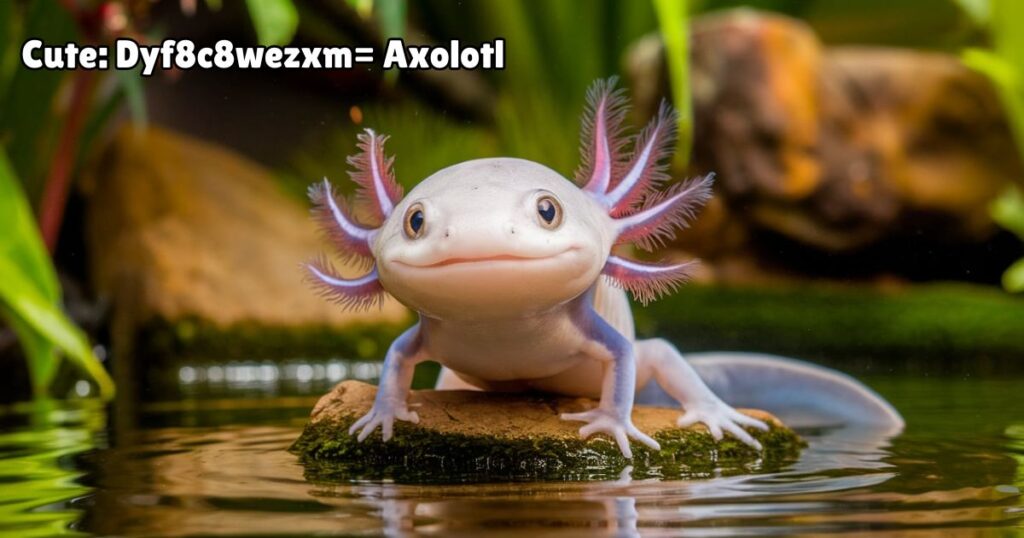In the world of fascinating creatures, few can match the allure of the axolotl (Ambystoma mexicanum). These charming aquatic salamanders, with their perpetual smiles and extraordinary abilities, have captured the imagination of scientists, pet enthusiasts, and pop culture alike. Let’s dive into the enchanting world of these underwater marvels and discover why they’re not just cute, but also incredibly important.
What Is an Axolotl?
Axolotls are neotenic salamanders, meaning they retain their juvenile features throughout their lives. Native to the ancient lakes of Xochimilco in Mexico City, these remarkable creatures have adapted to a fully aquatic lifestyle.
Their name, pronounced “AX-oh-lot-ul,” comes from the Nahuatl language and is associated with the Aztec god of fire and lightning, Xolotl.
Key Characteristics of Axolotls
Axolotls possess a unique set of features that set them apart from other amphibians:
- Neoteny: They keep their larval features, including gills, throughout their lives.
- Regenerative abilities: They can regrow lost limbs, organs, and even parts of their brain.
- External gills: Feathery structures on their heads that they use for breathing.
- Wide, smiling mouths: Giving them an endearing, friendly appearance.
- Variety of colors: From wild-type dark colors to albino, golden, and even fluorescent hues in captivity.
These characteristics make axolotls not only fascinating subjects for scientific study but also increasingly popular as pets.
Origins of the Axolotl
The story of the axolotl begins in the heart of Mexico, in the ancient lake complex of Xochimilco. This unique ecosystem, once part of a vast lake system that included Lake Texcoco, has been the axolotl’s home for thousands of years. The Aztecs revered these creatures, associating them with the god Xolotl, who was said to transform into an axolotl to escape sacrifice.
Over time, the axolotl adapted perfectly to this aquatic environment. The cool, plant-rich waters of Xochimilco provided an ideal habitat, allowing the axolotl to evolve its distinctive features. However, the urbanization of Mexico City has drastically altered this once-pristine ecosystem, pushing the wild axolotl population to the brink of extinction.
Unique Physical Characteristics
Axolotls are a testament to nature’s creativity, boasting a set of physical traits that are as functional as they are captivating.
Big Eyes and Innocent Expression
One of the most endearing features of the axolotl is its large, lidless eyes. These dark pools seem to convey a perpetual look of wonder, enhanced by their wide-set position on the head. The slight upturn at the corners of their mouths creates the illusion of a friendly smile, making them irresistibly charming to humans.
Fluffy Gills
Perhaps the most striking feature of the axolotl is its external gills. These feathery structures, usually in shades of pink or red, extend from behind the head like an elaborate headdress. The gills are not just for show they’re highly efficient organs that extract oxygen from the water, allowing the axolotl to remain fully aquatic throughout its life.
Playful Behavior
Despite their seemingly fixed expression, axolotls display a range of behaviors that can only be described as playful. They’re known to interact curiously with objects in their environment, ‘dance’ for food, and even seem to recognize their human caretakers. This combination of physical cuteness and engaging behavior makes them captivating creatures to observe.
Why Are Axolotls So Cute?

The axolotl’s cuteness factor is off the charts, but what exactly makes them so adorable? It’s a combination of physical features and behaviors that trigger our innate response to “cute” stimuli:
- Neotenic features: Their retention of juvenile characteristics appeals to our instinct to protect young creatures.
- Large eyes: Oversized eyes are a common feature in animals we find cute, triggering a nurturing response.
- Smiling expression: The upturned corners of their mouths give the impression of a constant smile.
- Soft, rounded body: The lack of sharp angles or threatening features makes them appear harmless and huggable.
- Playful behavior: Their curious and interactive nature endears them to observers.
This cuteness isn’t just appealing to humans it may have evolutionary advantages. In the wild, their unthreatening appearance might have helped them avoid predation, while in captivity, it has certainly contributed to their popularity as pets and research subjects.
Also Read: Decoding the Enigma: Filler Between Bathroom Tiles NYT Crossword Clue & Its Answers
The Fascinating Abilities of Axolotls
Beyond their charming appearance, axolotls possess a set of abilities that have made them the subject of intense scientific interest.
Regeneration Powers
The axolotl’s regenerative abilities are nothing short of miraculous. They can regrow entire lost limbs, including bones, muscles, and nerves, in a matter of weeks. But that’s not all they can also regenerate parts of their brain, spinal cord, and even heart tissue. This extraordinary ability is due to their unique stem cells and the way their bodies respond to injury.
When an axolotl loses a limb, a mass of stem cells called a blastema forms at the site of the injury. These cells then differentiate into the various tissues needed to rebuild the lost body part. Scientists are studying this process intensively, hoping to unlock secrets that could revolutionize regenerative medicine for humans.
Adaptability
Axolotls are masters of adaptation. In their native habitat, they’ve evolved to thrive in a range of water conditions. They can survive in both clear and murky waters, and their ability to regenerate helps them recover from injuries that would be fatal to other animals.
Interestingly, while axolotls usually remain in their aquatic larval form throughout their lives, they retain the ability to undergo metamorphosis under certain conditions. This transformation, while rare, allows them to become terrestrial salamanders, demonstrating their remarkable adaptability.
Lifespan and Care
In captivity, with proper care, axolotls can live up to 15 years. They’re relatively low-maintenance pets, but they do have specific care requirements:
- Water temperature: 60-64°F (16-18°C)
- Tank size: At least 20 gallons for one axolotl
- Diet: Worms, insects, and specially formulated axolotl pellets
- Water quality: Clean, dechlorinated water with gentle filtration
- Substrate: Fine sand or bare bottom to prevent accidental ingestion
Their longevity and relatively simple care needs have contributed to their popularity as both pets and laboratory animals.
Regeneration Abilities Explained
The axolotl’s regenerative abilities are so extraordinary that they deserve a closer look. This power goes far beyond the ability of some lizards to regrow their tails – axolotls can regenerate entire limbs, organs, and even parts of their brain and heart.
When an axolotl loses a body part, the wound quickly closes and a mass of cells called a blastema forms. This blastema contains stem cells that can differentiate into any type of cell needed. Over the course of several weeks, these cells multiply and specialize, rebuilding the lost body part with astonishing accuracy.
What’s truly remarkable is that this regenerated tissue is functional and nearly identical to the original. Scientists have observed that even the number of neurons in a regenerated spinal cord matches that of the original.
This ability is linked to the axolotl’s neoteny – by retaining juvenile characteristics, they also maintain the heightened regenerative abilities typically associated with early developmental stages. Researchers are studying the genetic and cellular mechanisms behind this regeneration, hoping to apply these insights to human medicine.
Imagine a future where we could regrow lost limbs or repair damaged organs – all thanks to the humble axolotl!
Axolotls as Pets
The unique charm and relatively simple care requirements of axolotls have made them increasingly popular as pets. However, potential owners should be aware of the specific needs of these aquatic salamanders.
Caring for Your Axolotl
Setting up an axolotl habitat requires some specific considerations:
- Tank Setup: A 20-gallon tank is suitable for one axolotl. The tank should be longer than it is tall, as axolotls prefer to walk on the bottom rather than swim.
- Water Quality: Axolotls are sensitive to water quality. Use a low-flow filter and perform regular water changes. The water should be dechlorinated and kept cool, between 60-64°F (16-18°C).
- Substrate: Fine sand or a bare bottom is best. Avoid gravel, which axolotls might accidentally ingest.
- Diet: Feed your axolotl earthworms, bloodworms, or specially formulated axolotl pellets. Adults typically eat 2-3 times a week.
- Handling: Minimize handling, as axolotls absorb oxygen through their skin and frequent handling can stress them.
- Tank Mates: It’s best to keep axolotls alone or with other axolotls of similar size. They may eat smaller tank mates and can be injured by larger or more aggressive fish.
Remember, while axolotls are fascinating pets, they’re not suitable for everyone. They require specific care and a long-term commitment, as they can live up to 15 years in captivity.
Axolotl Popularity in Culture

The unique appearance and remarkable abilities of axolotls have catapulted them into popular culture, making them much more than just a scientific curiosity.
Axolotls in Popular Culture
- Minecraft: The popular video game introduced axolotls as cute, helpful mobs in their Caves & Cliffs update, exposing millions of players to these charming creatures.
- Pokémon: The Pokémon Wooper is believed to be inspired by axolotls, bringing a stylized version of these salamanders into the world of pocket monsters.
- Literature: Julio Cortázar’s short story “Axolotl” uses these creatures as a metaphor for transformation and otherness, showcasing their impact on the literary world.
- Social Media: Axolotls have become stars on platforms like TikTok and Instagram, where their cute faces and unique characteristics make for popular content.
- Merchandise: From plush toys to t-shirts and mugs, axolotl-themed merchandise has become increasingly popular, reflecting their status as cultural icons.
This cultural popularity has a double-edged effect. While it raises awareness about these remarkable creatures, it also increases demand for axolotls as pets, which can put further strain on wild populations if not managed responsibly.
Conservation Efforts and Challenges
Despite their popularity in captivity, wild axolotls face a dire situation. The International Union for Conservation of Nature (IUCN) lists the axolotl as critically endangered, with some estimates suggesting fewer than 1,000 individuals remain in the wild.
The primary threats to wild axolotls include:
- Habitat Degradation: Urbanization of Mexico City has led to pollution and alteration of the Xochimilco canal system.
- Invasive Species: Introduced fish like tilapia and carp compete for food and prey on axolotl eggs and young.
- Water Pollution: Agricultural runoff and urban waste have degraded water quality in the axolotl’s native habitat.
- Climate Change: Altering water temperatures and precipitation patterns affect the delicate balance of the axolotl’s ecosystem.
Conservation efforts are underway to save the axolotl:
- Habitat Restoration: Projects are working to clean up and restore parts of the Xochimilco canal system.
- Captive Breeding Programs: Zoos and research institutions maintain captive populations to preserve genetic diversity.
- Education and Awareness: Programs in Mexico and worldwide are raising awareness about the axolotl’s plight.
- Legal Protection: The Mexican government has implemented laws to protect axolotls and their habitat.
The challenge lies in balancing conservation with the needs of Mexico City’s growing population. It’s a complex issue, but with continued efforts and increased awareness, there’s hope for these remarkable creatures.
Also Read: The Real Story of Wife Crazy Stacie: A Journey of Resilience and Redemption
Conclusion
From their charming smiles to their extraordinary regenerative abilities, axolotls truly are one-of-a-kind creatures. They’ve captured our hearts with their cuteness, amazed us with their resilience, and inspired scientific breakthroughs with their unique biology.
As we’ve explored, axolotls are more than just cute faces. They’re living laboratories, offering insights into regeneration that could revolutionize medicine. They’re cultural icons, appearing in everything from video games to literature. And they’re a poignant reminder of the delicate balance of nature, their endangered status in the wild contrasting sharply with their popularity in captivity.
Whether you’re considering an axolotl as a pet, diving into axolotl-inspired pop culture, or simply appreciating these unique creatures from afar, remember that they represent an important part of our planet’s biodiversity. Their future in the wild remains uncertain, but with continued conservation efforts and responsible pet ownership, we can ensure that these smiling salamanders continue to charm and amaze us for generations to come.





